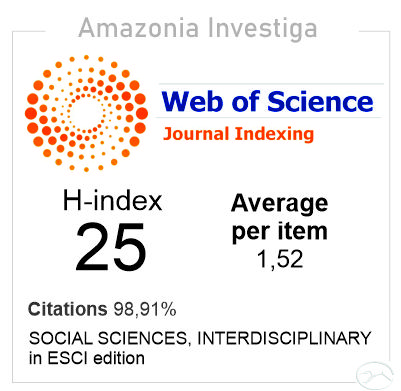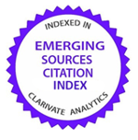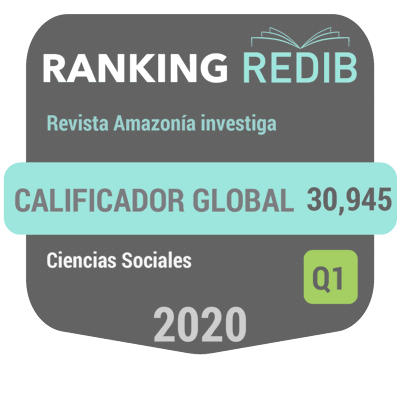Applying Big Data technologies to counter cyber fraud
Abstract
By January 2021, the number of Internet users amounted to 4.7 billion, while the social media audience hit the 4.2 billion mark. Two-thirds of the world’s population use mobile phones daily. The average Internet user spends 42% of his time in the global network. These figures prove convincingly that the Internet has become an integral part of human life. However, man’s using the Internet involves increasingly the risk of cybercrime perpetrated against the user. The purpose of the research is to assess the potential of Big Data technologies to combat cyber fraud as a form of cybercrime. The study used the statistical data provided by the Prosecutor General’s Office of the Russian Federation and the publications in scientific journals. The methodological basis of the research is represented by a combination of general scientific and special scientific methods, with analysis, statistical method and systemic approach being the major tools. It was found in the course of the research that fraud constitutes the majority of crimes on the Internet. To counteract it, mobile operators and banks use anti-fraud techniques based on Big Data analysis. The paper provides an overview of services and programmes based on artificial intelligence and Big Data technologies, aimed at detecting and preventing telephone and internet fraud, used by law enforcement agencies in various countries. The paper concludes that Big Data has changed the vector of law enforcement activity from reactive to proactive.
Downloads
References
Al-Hashedi, K.G., & Magalingam, P. (2021). Financial fraud detection applying data mining techniques: A comprehensive review from 2009 to 2019. Computer Science Review, 40, article number 100402. https://doi.org/10.1016/j.cosrev.2021.100402
Ali, M.A., Azad, M.A., Centeno, M.P., Hao, F., & van Moorsel, A. (2019). Consumer-facing technology fraud: Economics, attack methods and potential solutions. Future Generation Computer Systems, 100, 408-427. https://doi.org/10.1016/j.future.2019.03.041
Apurva, A., Ranakoti, P., Yadav, S., Tomer, S., & Roy, N.R. (2017). Redefining cyber security with big data analytics. 2017 International Conference on Computing and Communication Technologies for Smart Nation (IC3TSN), 199-203, https://doi.org/10.1109/IC3TSN.2017.8284476
De Vries, A. (2018). Bitcoin's Growing Energy Problem. Joule, 2(5), 801-805. https://doi.org/10.1016/j.joule.2018.04.016
Etaiwi, W., Biltawi, M., & Naymat, G. (2017). Evaluation of classification algorithms for banking customer’s behavior under Apache Spark Data Processing System. Procedia Computer Science, 113, 559-564. https://doi.org/10.1016/j.procs.2017.08.280
Everett, C. (2015). Big Data – the Future of Cyber-security or its Latest Threat? Computer Fraud & Security, 9, 14–17. https://doi.org/10.1016/S1361-3723(15)30085-3
Federal Bureau of Investigation (2020). Internet Crime Report 2020. IC3. https://www.ic3.gov/Media/PDF/AnnualReport/2020_IC3Report.pdf
Gimenez-Aguilar, M., de Fuentes, J.M., Gonzalez-Manzano, L., & Arroyo, D. (2021). Achieving cybersecurity in blockchain-based systems: A survey. Future Generation Computer Systems, 124, 91-118, https://doi.org/10.1016/j.future.2021.05.007
Kemp, S., Miró-Llinares, F., & Moneva, A. (2020). The Dark Figure and the Cyber Fraud Rise in Europe: Evidence from Spain. European Journal on Criminal Policy and Research, 26, 293–312. https://doi.org/10.1007/s10610-020-09439-2
Korsell, L. (2020). Fraud in the Twenty-first Century. European Journal on Criminal Policy and Research, 26, 285–291. https://doi.org/10.1007/s10610-020-09463-2
Larionova, S.L., & Ryakhovsky, E.E. (2021). Improvement of antifraud system algorithms based on GRAPH REPRESENTATION LEARNING methods and CYCLEGAN networks. Innovation and Investment, 6, m137-142. http://innovazia.ru/upload/iblock/84b/410sqsd4vbcda3by4jjf3nhyrxnkhfme/%E2%84%966%202021.pdf
Medvedeva, M.B., & Vasin, M.M. (2019). Problems of protection against fraud in transactions with payment cards in the system of credit and banking servicing of individuals and the development of its legislative support. Financial Markets and Banks, 1, 30-35. https://cyberleninka.ru/article/n/problemy-zaschity-ot-moshennichestva-v-operatsiyah-s-platezhnymi-kartami-v-sisteme-kbo-fizicheskih-lits-i-razvitie-ee-zakonodatelnogo
Meliksetyan, S.N., & Nusratullin, I.V. (2017). Influence of international sanctions on investment activity in Russia. Proceedings of the 17th International Scientific Conference on Globalization and Its Socio-Economic Consequences, 1549-1556.
Najafabadi, M.M., Villanustre, F., Khoshgoftaar, T.M., Seliya, N., Wald, R., & Muharemagic, E. (2015). Deep learning applications and challenges in big data analytics. Journal of Big Data, 2, article number 1. https://doi.org/10.1186/s40537-014-0007-7
Nusratullin, I., Yarullin, R., Ismagilova, T., Eremeeva, O., & Ermoshina, T. (2021). Economic and financial results of the USA and the European Union sanctions war against Russia: first results. Cuestiones Políticas, 39(68), 251-272. https://doi.org/10.46398/cuestpol.3968.16
Ovchinsky, V.С. (2017). Technologies of the future against crime. Moscow: Book World. (In Russian)
Prosecutor General's Office of the Russian Federation (2018). The state of crime in Russia in January-December 2018. Internet portal of legal statistics. http://crimestat.ru/analytics
Prosecutor General's Office of the Russian Federation (2019). The state of crime in Russia in January-December 2019. Internet portal of legal statistics. http://crimestat.ru/analytics
Prosecutor General's Office of the Russian Federation (2020). The state of crime in Russia in January-December 2020. Internet portal of legal statistics. http://crimestat.ru/analytics
Sentsova, A.Y., Timergazin, V.E., & Ilyasova, R.I. (2021). Anti-fraud system as a tool for fraud prevention. Information technologies. Problems and solutions, (4), 101-107. http://vtik.net/konference/sb_trud/ITPS_2021_4(17).pdf
Shaporin, R.О., Shaporin, V.О., Mikhailov, О.М., & Lysenko, A.V. (2019). Artificial intelligence system for identifying robot behavior on a web resource. Herald of Advanced Information Technology, 2(4), 288-297. Retrieved from http://hait.ccs.od.ua/index.php/journal/article/view/55
Singh, M.M., & Bakar, A.A. (2019). A Systemic Cybercrime Stakeholders Architectural Model. Procedia Computer Science, 161, 1147-1155. https://doi.org/10.1016/j.procs.2019.11.227
Sukhodolov, A.P., & Bychkova, A.M. (2018). Artificial intelligence in counteraction to crime, its prediction, prevention and evolution. All-Russian Journal of Criminology, 12 (6), 753-766.
Wall, D.S. (2018). How Big Data Feeds Big Crime. Global History: A Journal of Contemporary World Affairs. https://ssrn.com/abstract=3359972
Wang, B., & Wang, Y. (2021). Big data in safety management: an overview. Safety Science, 143, article number 105414. https://doi.org/10.1016/j.ssci.2021.105414
Zhang, M.Y., & Williamson, P. (2021). The emergence of multiplatform ecosystems: insights from China's mobile payments system in overcoming bottlenecks to reach the mass market. Technological Forecasting and Social Change, 173, article number 121128. https://doi.org/10.1016/j.techfore.2021.121128
































































.gif)






